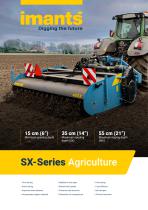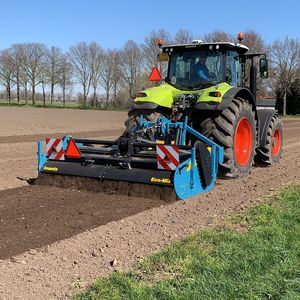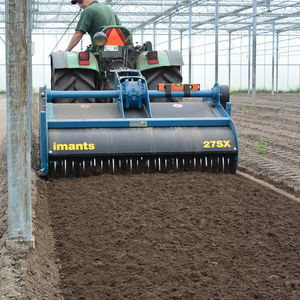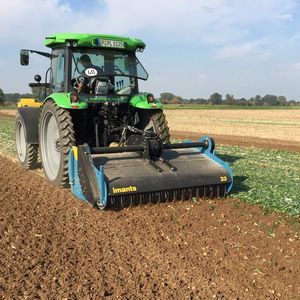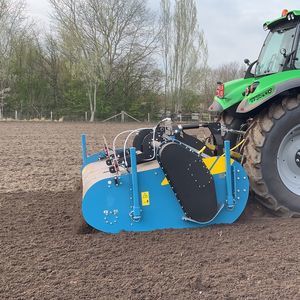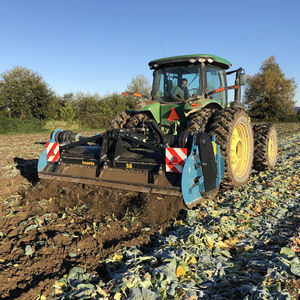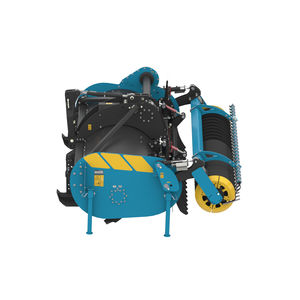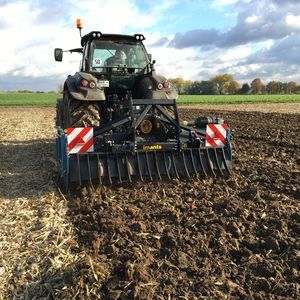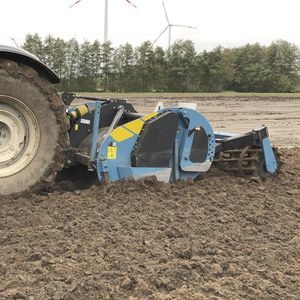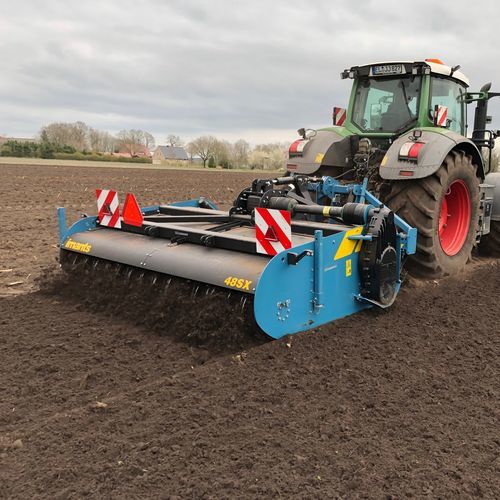
PTO-driven spader 48 series

Add to favorites
Compare this product
Characteristics
- Other characteristic
- PTO-driven
- Width
Max.: 144 in
Min.: 118 in
133 in, 405 in
(133 in, 159 in)- Engine power
Max.: 300 ch
(300 hp)Min.: 140 ch
(140 hp)
Description
Tillage and seedbed preparation in one. Versatile use, possible with integrated tillage legs. Possible in combination with seeding or planting.
More than 60 years of experience with spading machines is something Imants can look back on. From that experience we learned spading is more than just turning soil. Much more, in fact. Spading means mixing organic material with the living topsoil, incorporating crop residues and creating a seedbed, mixing green manure so it can be broken down into nutrients for the next crop. In short, both above the ground and in the soil you will achieve an even, homogeneous and well aerated soil after tillage with Imants spading machines. The true one pass tillage tool.
The SX spading machines from Imants are rotary spading machines. They work the soil by means of spades which are attached to the spading shaft via a steel arm. On the 48 Series, 4 spade arms create a bank. The number of spades on the spade shaft varies according to the working width.
Depending on what you need on your farm Imants can recommend the right spading machine. There are spading machines that can work shallowly (12 cm (5”) deep) but as well as very deep (up to 135 cm (53”) is possible.
different types of hitches for mounting , optional Integrated tillage legs, 4 spade arms create a bank, different rollers available, PTO shaft with Torque limiting clutch, ideal working speed 7km/h or 3.1m/h, different trailing rollers available
VIDEO
Catalogs
48SX SERIES
11 Pages
Exhibitions
Meet this supplier at the following exhibition(s):


Related Searches
- Stubble cultivator
- Mounted stubble cultivator
- Rotary hoe
- Rigid tine stubble cultivator
- Ripper
- Field cultivator with hydraulic adjustment
- Fixed stubble cultivator
- Soil loosener with roller
- Orchard rotary hoe
- Fixed soil loosener
- Soil loosener with hydraulic adjustment
- Horizontal-axis rotavator
- Vineyard rotary hoe
- Soil loosening stubble cultivator
- Spader
- PTO-driven spader
- Depth control rotary hoe
- Tractor-mounted spader
- Mechanical rotary tiller
- Drainage subsoiler
*Prices are pre-tax. They exclude delivery charges and customs duties and do not include additional charges for installation or activation options. Prices are indicative only and may vary by country, with changes to the cost of raw materials and exchange rates.


